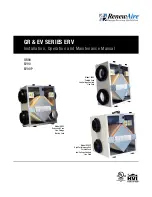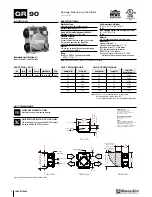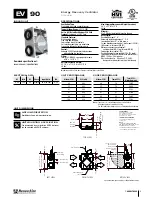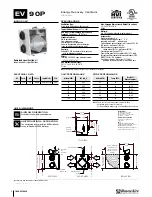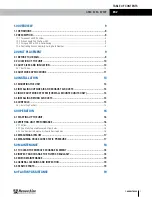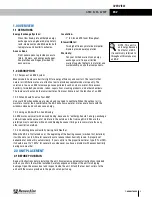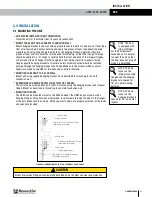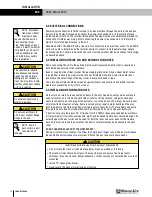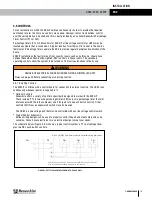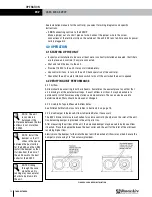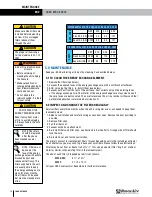
1.800.627.4499
14
GR90, EV90, EV90P
ERV
INSTALLATION
Power supply connection to GR90 is made in its electrical box through the hole in the end pan.
Pull out the unit electrical box and connect the power wire conductors to the terminal block
inside the electrical box. The terminal block inside the electrical box is conveniently marked for
connection of field power wiring. After connecting the power wire conductors to the terminal
block re-install the electrical box in the unit.
RenewAire offers the EV90/P with a line cord for connection to an electrical outlet. If an EV90/P
with a line cord is installed and the installer desires to convert to field power wiring, should
local codes permit, simply remove the line cord from the terminal block and connect field wiring
as described above.
3.2 ELECTRICAL CONNECTIONS
All the stale air returns are connected by ducts to the unit. Generally, empty stud cavities are
used for returns as is often done with cold air returns for the furnace, using standard duct
boots to connect to six inch pipe at the bottom or top of the wall cavity. Always be sure to seal
all joints with duct sealant or tape. Some local codes may require metal ducting all the way
from the boots to the stale air grilles. Use rigid ducts to allow the air to move freely and easily
through the ducts. See chart under Exhaust and Outside Air Ducts to size your ductwork.
If duct runs are very long (over 30' of flex duct for 90 CFM) or have excessive bends or elbows
or if maximum air flow rates are required, eight inch insulated flexible duct should be used. The
outer flange of the duct collar can be used for both the inner and outer jacket of the flexible
duct. Care must be taken to ensure that the duct is securely fastened and sealed to the duct
collar.
DO NOT USE MORE FLEX DUCT THAN NECESSARY!
Flex duct is much more resistant to airflow than rigid duct; longer runs of flex duct will reduce
the ventilation performance of your system. Stretch flex duct and avoid sharp bends.
Ducts connecting the unit to the outside must be well-insulated. Vapor barrier is required on
both inside and outside of the insulation.
Band or tape inner duct liner to inner flange of appropriate collar. Drive a sheet metal screw
through liner to secure duct spiral wire to collar. Straighten insulation, and slide outer duct
jacket onto the outer flange of the duct collar. Secure with band or tape.
The inlets and outlets should be screened against insects and vermin and shielded from the
weather to prevent the entry of rain or snow.
3.3 INSTALLING OUTSIDE AIR AND EXHAUST AIR DUCTS
The vapor barrier should
be continuous and sealed
against air and moisture
leakage! If not, condensa-
tion or ice may form in cold
weather on the duct surface
or in its insulation.
CAUTION
3.4 INSTALLING RETURN AIR DUCTS
Do not place any stale air
returns in garages.
CAUTION
Do not connect Dryers to
unit. Do not connect Range
Hoods to the unit.
CAUTION
Install Fresh Air Inlet Away From Sources of Contaminants.
u
Do not locate the fresh air inlet where vehicles may be serviced or left idling.
u
The fresh air inlet should be at least 10' away from any exhaust such as dryer vents,
chimneys, furnace and water heater exhausts, or other sources of contamination or carbon
monoxide.
u
Install 12" above ground level.
u
Never locate the fresh air inlet inside a structure.
CAUTION
NOTE: Seal all
duct collars a unit
to minimize air
leakage.
NOTE: Disconnec-
tion means: Most
electrical codes
require that the unit be
disconnected for ser-
vice. Depending on local
codes, an electrical outlet
(for EV90/P) or an on/off
switch available for the
unit (GR90) may satisfy
this requirement.

